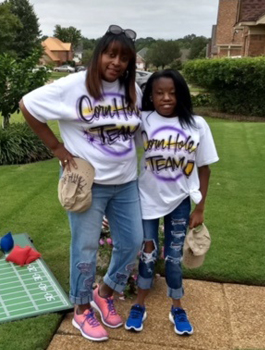 Being diagnosed with Early Onset Scoliosis can be challenging for patients and families. Many pediatricians and primary care providers are not specialists in this type of care and can be unsure of treatments available as well as outcomes from those treatments. The internet is full of resources available to help families cope with the challenges of this diagnosis. This includes blogs, forums, and the like. These can often be a positive place for families to connect with each other about their experiences and provide hope. However, it can often be a place where one person's experience can somehow seem like truth for all. If one person tries an alternative therapy and sees improvement, often others try the same therapy with wildly variable outcomes.
Being diagnosed with Early Onset Scoliosis can be challenging for patients and families. Many pediatricians and primary care providers are not specialists in this type of care and can be unsure of treatments available as well as outcomes from those treatments. The internet is full of resources available to help families cope with the challenges of this diagnosis. This includes blogs, forums, and the like. These can often be a positive place for families to connect with each other about their experiences and provide hope. However, it can often be a place where one person's experience can somehow seem like truth for all. If one person tries an alternative therapy and sees improvement, often others try the same therapy with wildly variable outcomes.
The other big problem with going to the internet for advice is that there is little to no scientific validation of treatments proposed by patients, families, and alternative providers. Without objective evidence backing up any treatment, patients can be put at serious risk by trying unproven or unstudied therapies. At the least, this can be a financial hit to families. At the most, this can cause or allow the problem to get worse—requiring surgical treatment when none was initially needed, or requiring bigger and sometimes more complicated surgery to treat the issue.
Going To See The Orthopedic Surgeon
An orthopedic specialist who is well versed in Early Onset Scoliosis should help families and patients make decisions on treatment. Depending on the type of scoliosis and its severity, non-invasive methods can be utilized to straighten or minimize the curve. Sometimes, a plastic brace or a series of casts can be used to improve a child's spinal curvature. For more severe cases, sometimes surgery is required to control or correct a curvature.
Surgery
Surgery can be broken down into two main groups—growth friendly constructs and spinal fusions. Growth friendly constructs generally consist of a primary inpatient surgery to place spinal implants, followed by follow-up appointment to lengthen the constructs to allow for growth. On the contrary, a spinal fusion consists of placement of implants into the spine and fusing those sections together so that the spine cannot continue to curve. This is generally done on patients older than about 10 years old or have less spinal growth remaining. Your orthopedic surgeon can discuss with you what type of surgery will be required and why. Click here to learn more about the different types of implants.
Life after surgery
Quality of life after surgery and recovery, regardless of the type, generally is as good or better than before surgery. Children with very severe scoliosis generally see the most improvement because of improvements in the size of the space available for the lungs in the chest, thus improving their ability to breathe. Even children with more moderate or mild scoliosis see some improvement in the size and shape of their chests or at least prevention of progression of the curvature in the spine. The goal for the orthopedic surgeon is to provide the best quality of life for the patient at the conclusion of treatment and at the end of growth. Click here to read the stories of children who have shared what their journey was like from diagnosis of EOS to life after surgery.